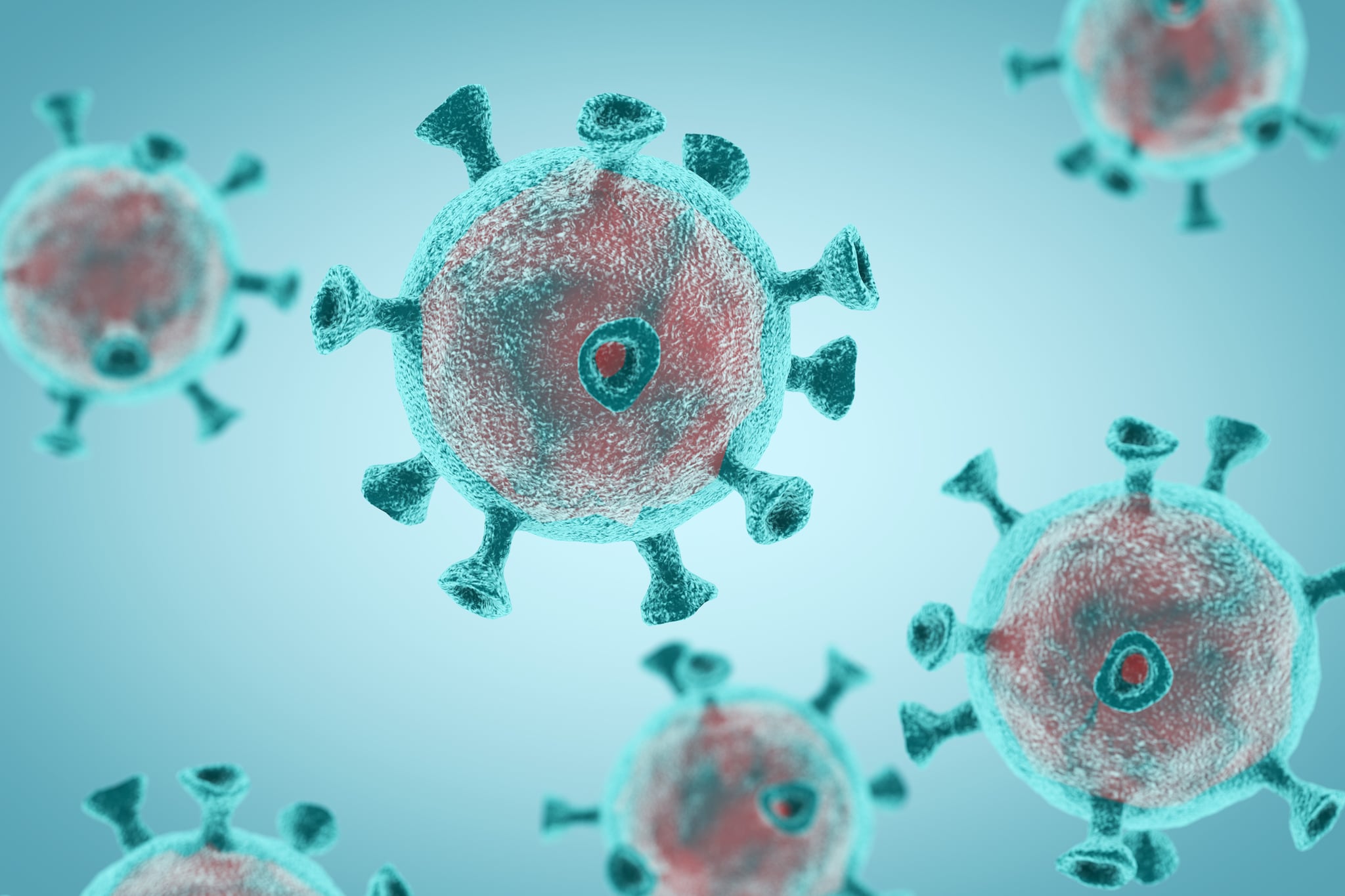As the COVID-19 pandemic continues, unfortunately, so does the rise of new and emerging variants. The latest to dominate headlines is the BA.5 variant. According to recent data from the Centers for Disease Control and Prevention (CDC), the variant has accounted for 54 percent of the country’s new cases, while BA.4, another emerging variant, makes up almost 17 percent of the new cases.
The BA. 5 variant is reportedly the most contagious one to date, per Yale Medicine. The Food and Drug Administration has recommended that the next round of boosters be targeted to combat BA.4 and BA.5 “so that the modified vaccines can potentially be used starting in early to mid-fall 2022,” said Peter Marks, MD, PhD, director of the FDA’s Center for Biologics Evaluation and Research, in a statement.
So what makes BA.5 so hard to avoid? We spoke to infectious disease expert Amesh Adalja, MD, senior scholar at the Johns Hopkins University Center for Health Security, to learn more about the dominant strain.
What Is BA.5?
“BA.5 is an omicron variant of SARS-CoV2,” Dr. Adalja tells POPSUGAR. “It is likely a descendent of the BA.2 variant and has a cluster of mutations that make it very efficient at transmitting between people and avoiding some of the protection prior infection and vaccines provide.” It’s this combination of mutations that gives BA.5 its high degree of transmissibility.
What Do Symptoms of BA.5 Look Like? How Do They Differ, If at All, to Previous Variants?
The symptoms of BA.5 aren’t very different from other variants, Dr. Adalja says. “It’s all a spectrum of upper respiratory symptoms, and one cannot tell the difference between variants based on clinical symptoms.” Coughing, sore throat, fatigue, runny nose, headaches and/or muscle pains can all be expected.
What’s the Likelihood of Reinfection With BA.5?
Unfortunately, the BA.5 variant is rather successful at reinfection. “BA.5 is able to reinfect those with immunity from prior infections, including prior omicron infection,” Dr. Adalja says. What’s more, there is some data that shows reinfection “lead to negative consequences.”
A recent study from the VA Health System based on the health records of more than 5.6 million people found that “compared to people with first infection, reinfection contributes additional risks of all-cause mortality, hospitalization, and adverse health outcomes in the pulmonary and several extrapulmonary organ systems.” So it’s important to try to avoid getting COVID, even if you’ve already had it and recovered from it.
How Well Do Current Vaccines and Boosters Work to Protect Against BA.5?
Current vaccines work to “protect against what matters most,” Dr. Adalja says. That includes severe disease, hospitalization, and death. Still, experts know that the “effectiveness of primary vaccination wanes over time against certain variants, including omicron,” Dr. Marks admitted in his recent statement.
To ensure that the population continue to be as protected as it can be, the FDA has advised manufacturers to focus their next round of boosters on the most dominant variants. “As we move into the fall and winter, it is critical that we have safe and effective vaccine boosters that can provide protection against circulating and emerging variants to prevent the most severe consequences of COVID-19,” Dr. Marks said.
Will Mask Mandates and Other Social-Distancing Protocols Be Reinstated in Light of the BA.5 Variant?
Despite the rise in BA.5 cases, Dr. Adalja does not anticipate that mask mandates or other strict social-distancing rules will resume. “Those types of government measures do not make sense in the current context and especially if hospitals are not compromised,” he says.
How Can We Protect Ourselves Against BA.5?
The best way to protect oneself is to be vaccinated and boosted, especially if you are a high-risk individual (e.g., older adults, the immunocompromised, pregnant people, or those who have other medical conditions), Dr. Adalja says. Those in high risk situations — like extremely crowded indoor areas — should wear a mask.
High-risk individuals should also consider Evusheld, a preventative treatment for COVID-19 given to those who struggle to make antibodies and have a plan to be prescribed Paxlovid or receive a monoclonal antibody if positive, Dr. Adalja says.
